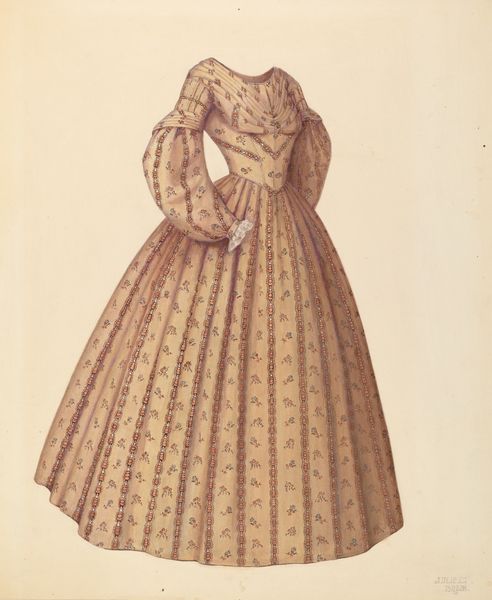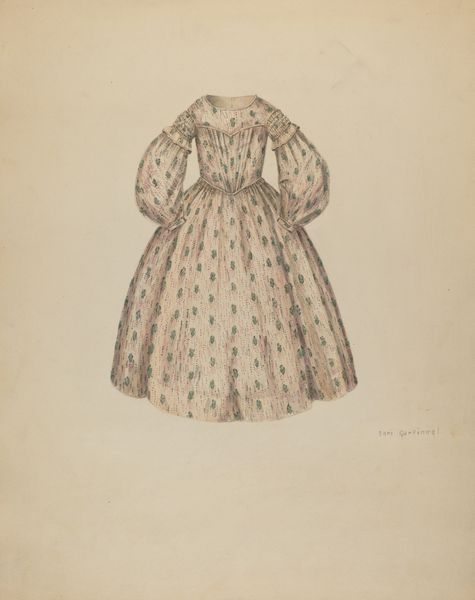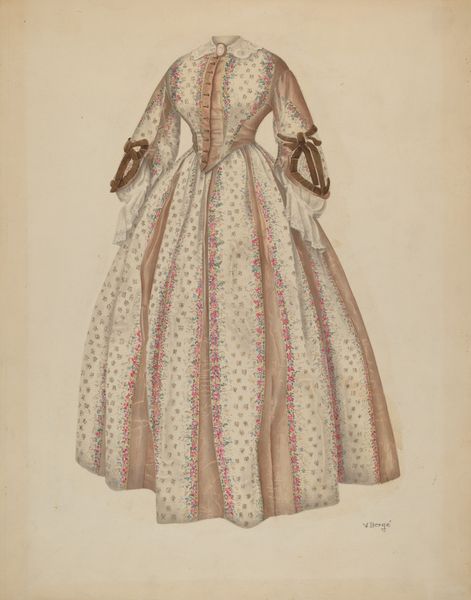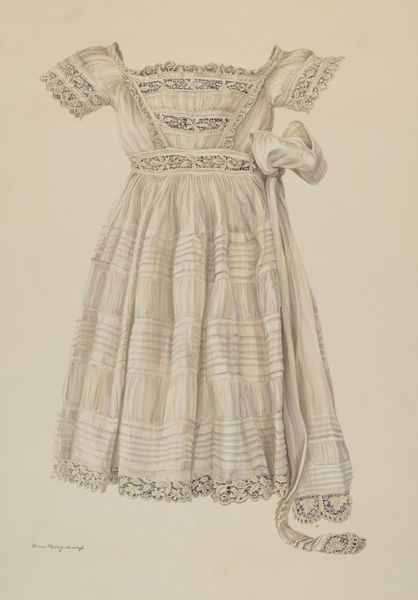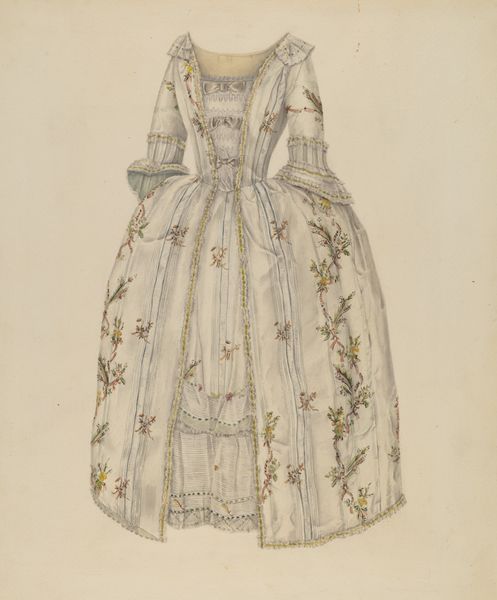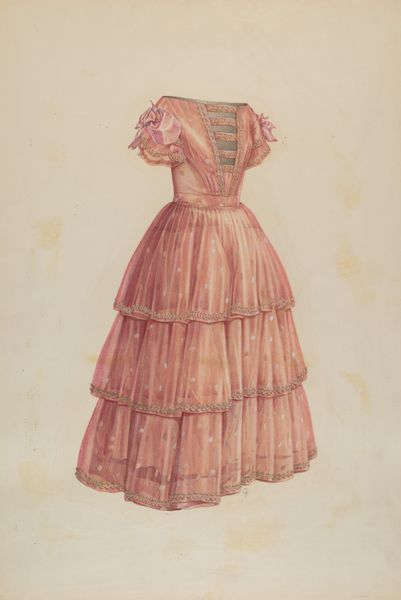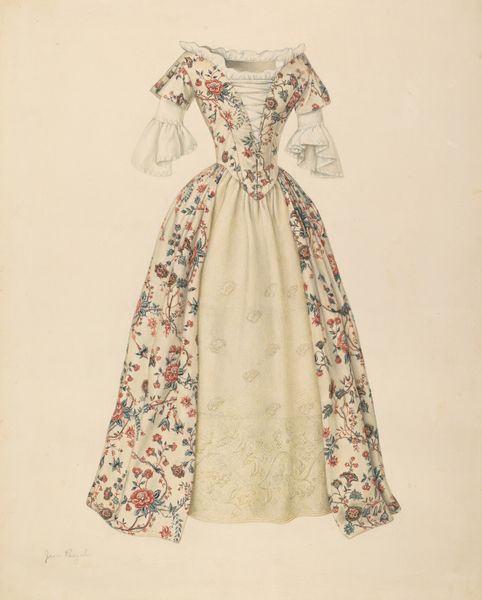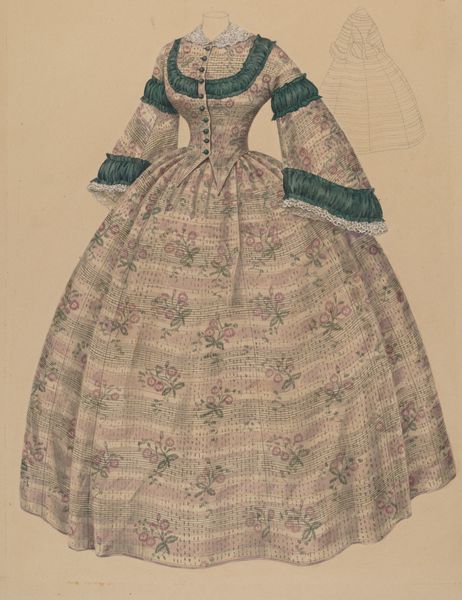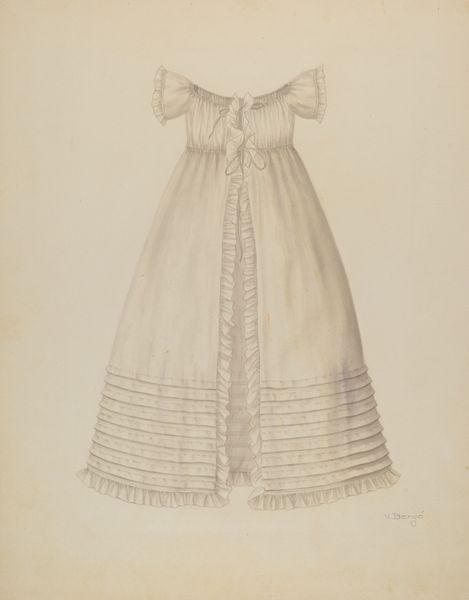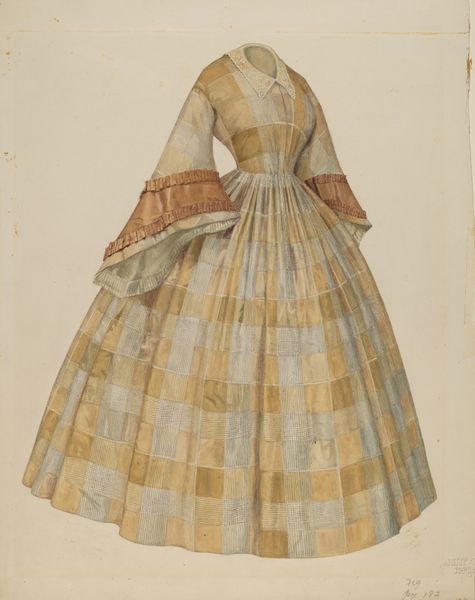
drawing, coloured-pencil, watercolor
#
drawing
#
coloured-pencil
#
watercolor
#
historical fashion
#
coloured pencil
#
watercolour illustration
#
watercolor
Dimensions: overall: 46 x 31.6 cm (18 1/8 x 12 7/16 in.)
Copyright: National Gallery of Art: CC0 1.0
Curator: Here we have "Dress with Hoop Skirt," a watercolor and colored-pencil drawing by Mary E. Humes, created sometime between 1935 and 1942. What strikes you first about it? Editor: The textures, undoubtedly. I see the way the layered tiers fall—almost as if she's inviting us to think about its weight, how the materials create such volume. It’s both delicate and strangely substantial. Curator: Indeed. Notice how Humes meticulously renders each fold and pleat of the fabric, a cascade of lines radiating from the waist. The pattern is especially interesting. We see small floral designs set against those broader stripes, creating a complex visual rhythm. Editor: The drawing, using what seems to be watercolors and colored pencil, prompts an inquiry into its own materiality, and into the actual dress's physical existence as a crafted object, the labor that went into that garment. How long would it have taken to sew all of those layers? Curator: It suggests a certain opulence, certainly. But beyond the sheer work involved, what about the underlying structural order? Consider the color palette itself, how those soft pinks and blues are subtly deployed to create both harmony and visual interest. Editor: Right, the process itself communicates something about the social context of clothing production at that time. Mass production was becoming common; was this a conscious choice to emphasize handcrafted artistry? The detail on the fabric border gives it an almost folk-art quality, but it could be deceptive, as an illusion of artisanal work made with newer technologies. Curator: A fascinating point, one that could alter our perspective about this artist's intentions entirely. By looking at the structural order, we can ask important questions of our viewing practice. What codes and underlying visual systems help us create the perception that Humes invites us to observe? Editor: Absolutely. Thinking through the material realities recontextualizes the whole viewing experience. The garment might suggest the elite and their culture but prompts us to remember all the hands whose labour made such a vision possible. Curator: This exploration shows us the piece moves beyond just a surface level examination. Editor: Definitely! It reminds us of the value in uncovering not only the visual language but the historical circumstances involved.
Comments
No comments
Be the first to comment and join the conversation on the ultimate creative platform.
